 Sasha Frere-Jones
Sasha Frere-Jones
A whole lot of holes: David Zwirner’s 52 Walker outpost pairs the two artists known for performance and interventions.
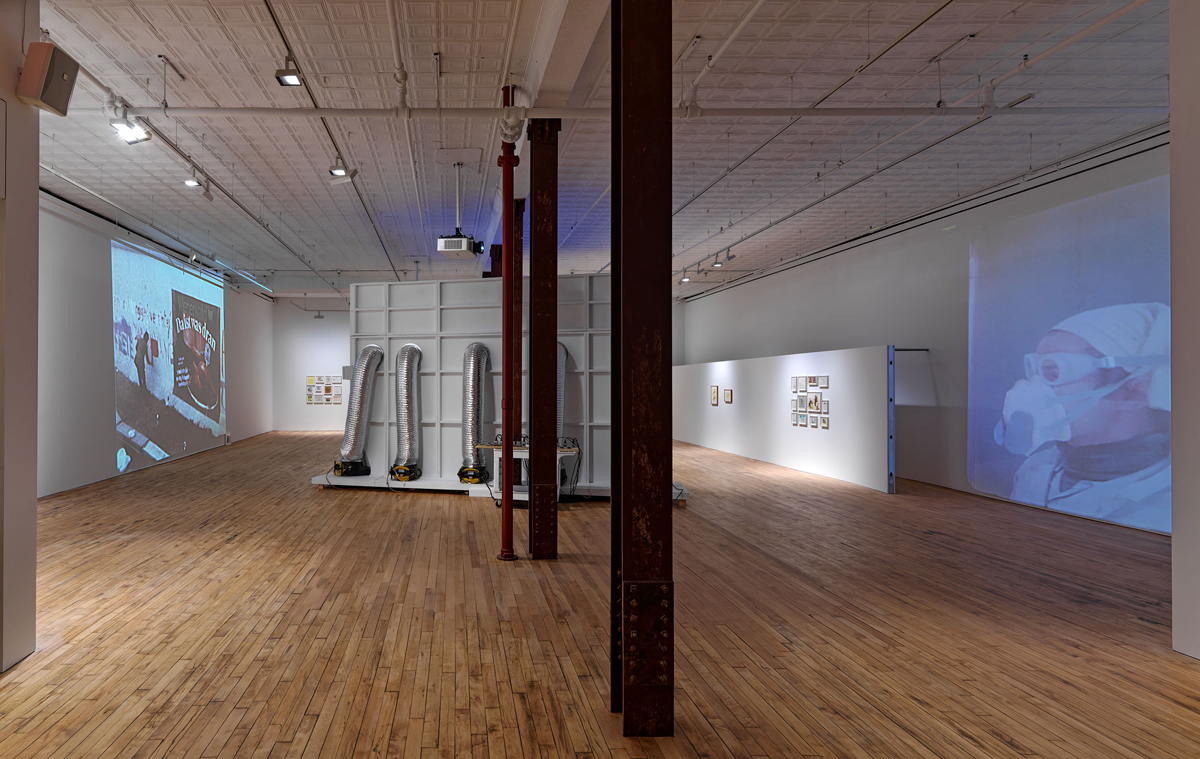
Gordon Matta-Clark & Pope.L: Impossible Failures, installation view. Courtesy 52 Walker and Mitchell-Innes & Nash.
Gordon Matta-Clark & Pope.L: Impossible Failures, curated by Ebony L. Haynes, 52 Walker, 52 Walker Street, New York City,
through April 1, 2023
• • •
Holes run through Impossible Failures, a pairing of work by Gordon Matta-Clark and Pope.L, curated by Ebony L. Haynes for David Zwirner’s 52 Walker. The first one is right there at the start of the exhibit: an eye-level porthole cut out of the wall separating the gallery space from the lobby. Sheetrock dust streaks the floor, ostentatiously not tidied up, and there are two other dusty cuts further in. These puncta are nods to both the late Matta-Clark, CEO of perforating buildings, and Pope.L, author of a 2002 pamphlet called Hole Theory (the third cut was made per his orders). The only information provided here, though, is the title of the show—there is no other wall copy. If you miss the brief bits of text in the three Matta-Clark films on view, you may not know why you’re watching shaky 16mm footage from the ’70s of someone hacking up walls and floors. And if you don’t know that Pope.L once performed by crawling in a gutter while wearing a suit because he didn’t want “to get used to seeing” homeless people, you might think his new work, Vigilance a.k.a Dust Room (2023), is just another big-ticket Zwirner item involving mirrors made by an art-world hotshot with a gang of assistants all putting their lunch boxes at right angles.
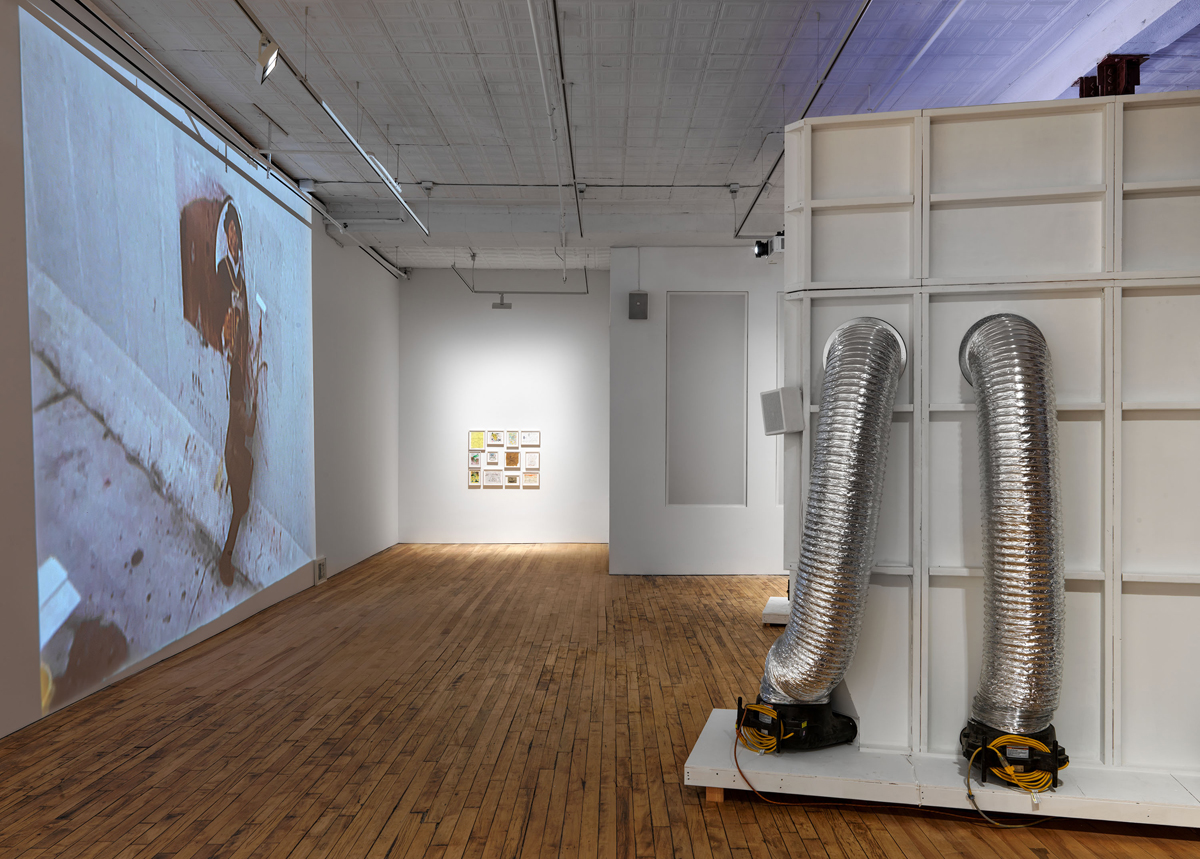
Gordon Matta-Clark & Pope.L: Impossible Failures, installation view. Courtesy 52 Walker and Mitchell-Innes & Nash. Pictured, right: Pope.L, Vigilance a.k.a. Dust Room, 2023. Mirrors, wood, ducts, fan, extension cords, blue tarp, lights, utility cart, sound, electrical panels, and particles, 139 × 235 3/4 × 235 3/4 inches.
Dust Room is a huge white wooden box pumped full of air by noisy silver ducting worms. The “failure” of the exhibit title is there in the childish, Magic-Markered sign lying on the table holding the power supplies for the fans. It reads “DANGER! DO NOT OPERATE THIS DUST ROOM! NOT READY FOR SAFETY.” Here be holes: a lack of stability and certitude. There are a handful of small drawings from both artists that surround the bigger pieces at the center of the gallery, though they have little impact. (Another video of Pope.L’s, Dust Eater a.k.a. White Woman Eating A Donut, 2007–09/2022, is sequestered in a corridor toward the back, to what end I don’t know.) Stripped of context, the artists come across as pranksters, gremlins from unidentified parts and unknown times.
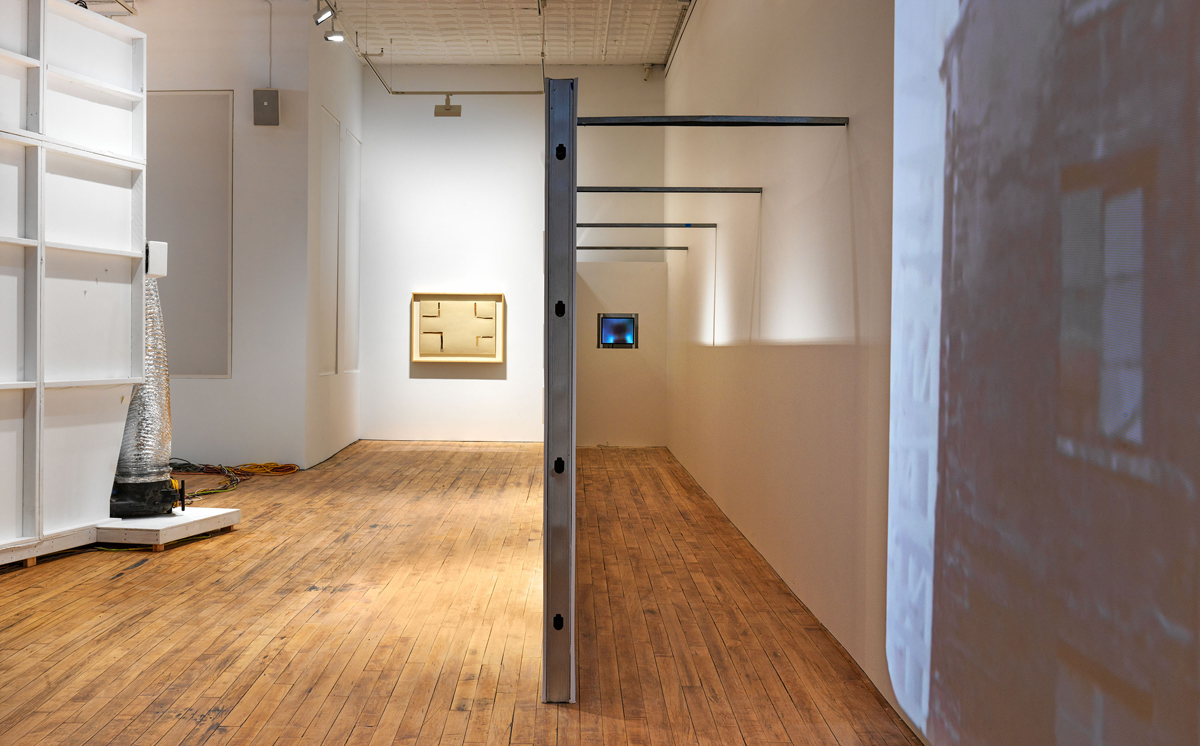
Gordon Matta-Clark & Pope.L: Impossible Failures, installation view. Courtesy 52 Walker and Mitchell-Innes & Nash.
Considering the title, Impossible Failures, and some of Pope.L’s ideas, this could all be intentional. “Typically what cannot be seen / Is what we most like to see,” Pope.L writes in Hole Theory. “Longing is my favorite / Material for engaging (not picturing, / Not illustrating) holes.” Absent any other cues, this might be the Pope.L text to work from, even if it’s not part of the exhibit. There is a sweet desolation to this collection, a quiet longing for answers.
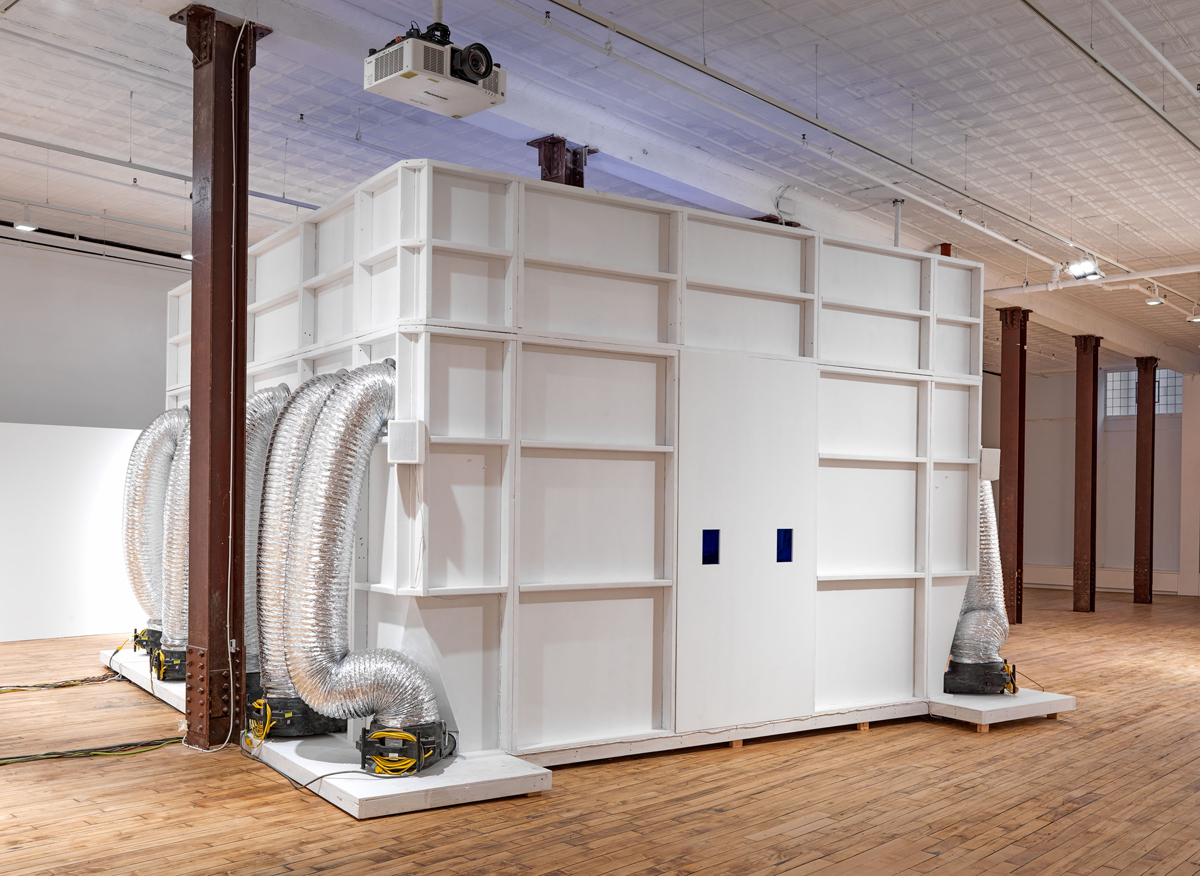
Gordon Matta-Clark & Pope.L: Impossible Failures, installation view. Courtesy 52 Walker and Mitchell-Innes & Nash. Pictured: Pope.L, Vigilance a.k.a. Dust Room, 2023. Mirrors, wood, ducts, fan, extension cords, blue tarp, lights, utility cart, sound, electrical panels, and particles, 139 × 235 3/4 × 235 3/4 inches.
In Vigilance a.k.a Dust Room, a dark blue artificial snowstorm is visible through two tiny windows. There is a mirrored post centered between the mirrored walls as well as a small black cube on the floor, all of it whipped by the “dust” (possibly small Styrofoam pellets) being propelled around the room. Each time I saw the exhibit, the interior of the box took me away from myself, like I was a voyeur inside someone else’s dream.
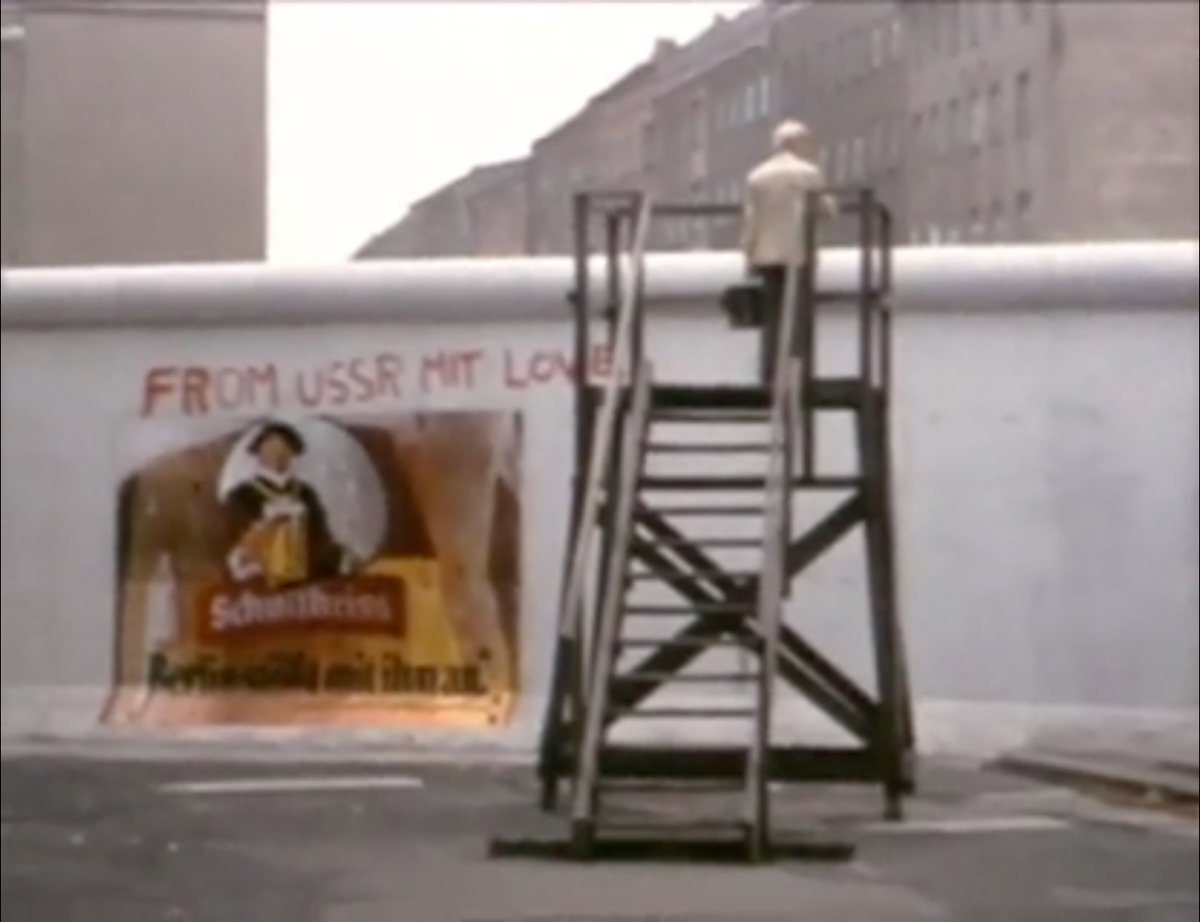
Gordon Matta-Clark, The Wall, 1976/2007 (still). Color video, sound, 15 minutes. Music by Peter Gordon. Courtesy the Estate of Gordon Matta-Clark and David Zwirner. © The Estate of Gordon Matta-Clark / Artists Rights Society.
As you gaze inside, the mirrored surfaces begin to reflect the films on the opposite wall, meaning you can watch Matta-Clark paint “FROM USSR MIT LOVE” on the Berlin Wall “inside” Pope.L’s piece. That Matta-Clark film, The Wall (1976), has a score by Peter Gordon, which is either not playing (we think) or simply inaudible over the roar of the fans. Why no score here? No idea.
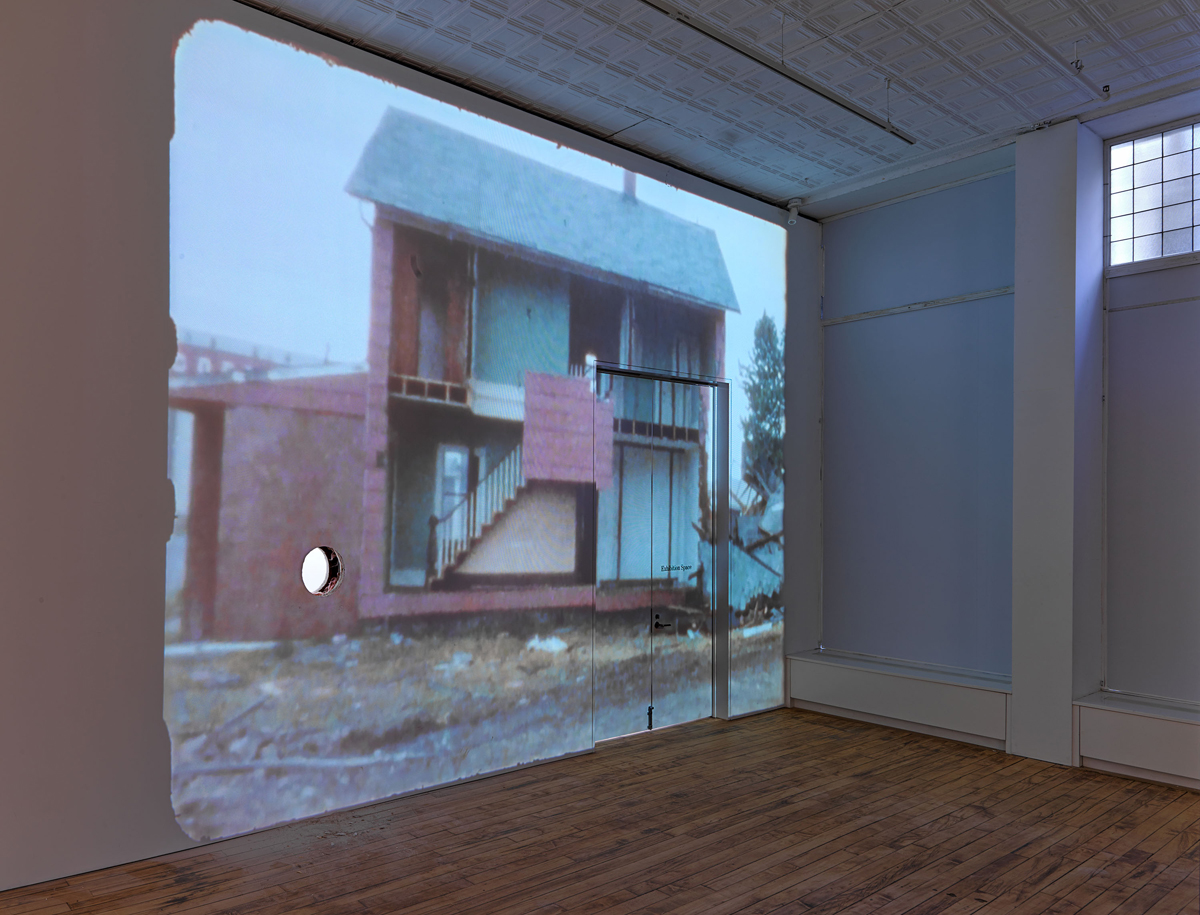
Gordon Matta-Clark & Pope.L: Impossible Failures, installation view. Courtesy 52 Walker. Pictured: Gordon Matta-Clark, Bingo / Ninths, 1974. 16mm film, color, silent, 9 minutes 40 seconds.
Until his death at thirty-five in 1978, Matta-Clark used his prodigious charm and (largely) natural energy to rewrite the story of buildings and show us how much they contain that isn’t about money. A frumpy two-story wooden frame? A bingo board for the nearly blind, each rectangle five feet high, undiscovered wafers of soft and hard. That’s Bingo / Ninths (1974), a film of Matta-Clark turning the side of a house slated for demolition into a grid of nine spaces (bingo!) before the bulldozer arrives, only an hour after he finishes cutting the house apart. As you come into 52 Walker, this film is projecting directly at you, meaning everyone who enters the gallery “enters” this “house,” a joke Matta-Clark would have likely appreciated. At this level of visual dialogue, the show works.
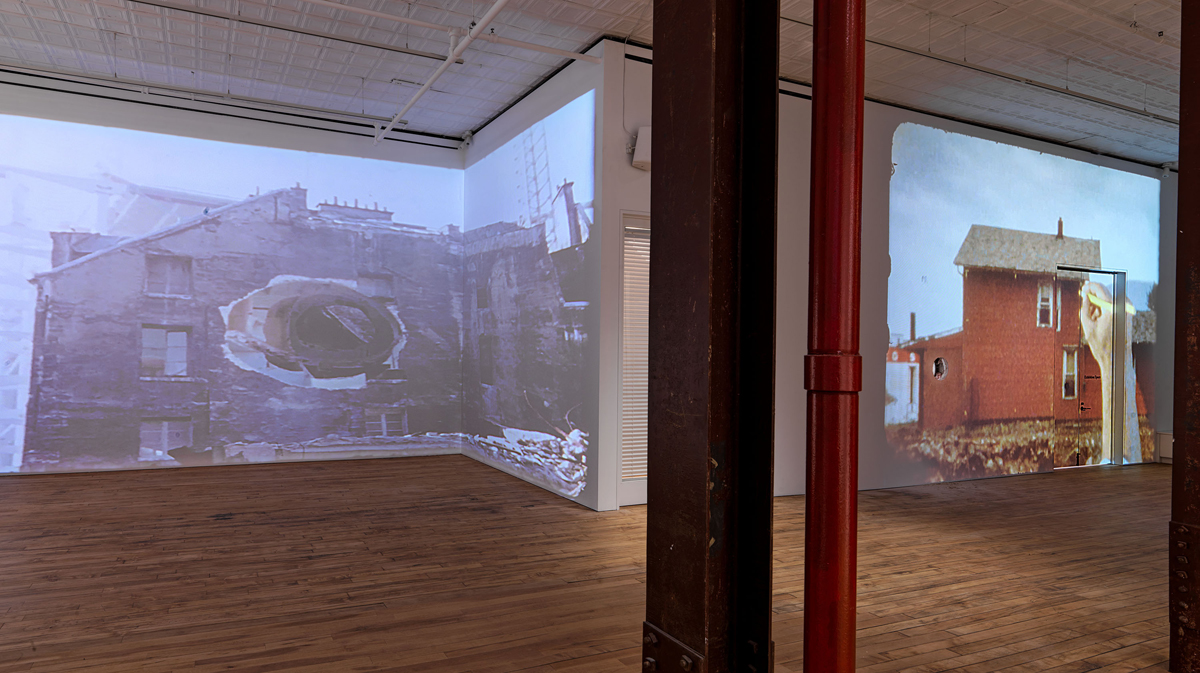
Gordon Matta-Clark & Pope.L: Impossible Failures, installation view. Courtesy 52 Walker. Pictured, left: Gordon Matta-Clark, Conical Intersect, 1975. 16mm film, color, silent, 18 minutes 40 seconds. Right: Gordon Matta-Clark, Bingo / Ninths, 1974. 16mm film, color, silent, 9 minutes 40 seconds.
Condemned Paris tenement? Hardly—the perfect medium to fix the fleeting, a way to carve a light sculpture into brick and plaster. That’s Conical Intersect from 1975, a film of Matta-Clark and Gerry Hovagimyan hacking away inside a pair of buildings, clearing out a conical shape whose point is deep inside the structure and whose circular base is an aperture looking out on rue Beaubourg. Conical Intersect was partly inspired by Anthony McCall’s 1973 light-and-fog piece, Line Describing A Cone, which perhaps seemed too permanent to Matta-Clark. McCall’s piece used a projector to create a cone of light that disappeared when the projector turned off. Matta-Clark’s piece barely lasted a day before the backhoes came in and destroyed the buildings (now the site of the Centre Pompidou). The color film is rough documentation of an action that the opening titles say was “FOCUSED TOWARDS THE STREET, ANGLED UP WITH PASSERS BY AS A SILENT ‘SON-ET-LUMIERE.’ ” There are several shots of onlookers, ostensibly puzzled, like a Magritte painting watching itself, heads tilted up to the sky. At around the twelve-minute mark, a view into the building shows the circular wall cuts growing smaller as they spiral into the space, as if Thor had shoved a sharp metal cone into the side of the apartments. Without the film of its creation, Conical Intersect was possibly performance art, gone the moment it ended.
In 1996, Pope.L said in BOMB magazine, “I’m suspicious of things that make sense.” Cleaved from history, Matta-Clark and Pope.L are here relegated to only making no sense, a sensation I otherwise love and generally seek. And if this show wants to convey nothing but formal zing, it’s a success. I just don’t know why two artists with such rich practices, both with social aims, have been thinned out into wall stickers. Matta-Clark expressed his interests clearly, at several turns. In 1976, he told Donald Wall that the Conical Intersect project was supposed to be “an expression of the commonplace that might counter the grandeur and pomp of architectural structures and their self-glorifying clients.” He goes on from there, and I suggest that anybody with any interest in Gordon Matta-Clark buy the recent Archival Sourcebook, edited by Gwendolyn Owens and Philip Ursprung, which ably collates a bunch of remarkable primary documents. For Pope.L, My Kingdom for a Title and member: POPE.L 1978–2001 both do a reasonable job of summarizing the artist’s tricksy ways and willingness to discomfit audiences toward a political end. Impossible Failures does a fabulous job of showing how these artists embrace failure as a visual cue but forgets to tell us why they did it at all.
Sasha Frere-Jones is a musician and writer from New York. His memoir, Earlier, will be published by Semiotext(e) in October of 2023.